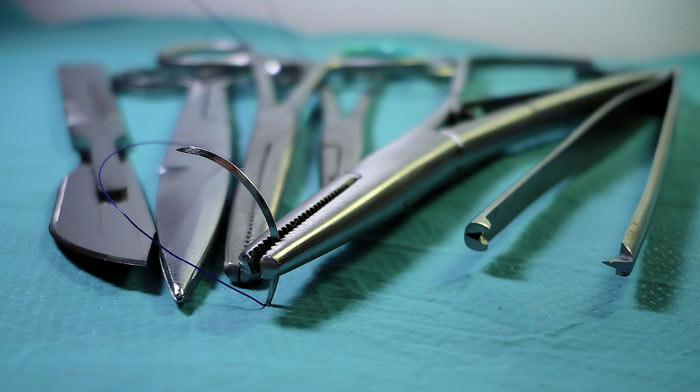About 5 years ago, a triangular face shape became a trend among young women. The trend for pronounced cheekbones, chin, and sunken cheeks came from Hollywood, which still has a significant impact on mass fashion. To achieve the maximum V-shape of the face, women inject fillers into the cheekbones and the chin or remove Bichat’s fat pads. Now we are witnessing a decrease in demand for this surgery: the fashion for a face with juvenile swelling is gradually returning to the beauty industry. However, some ladies still strive to remove the Bichat’s fat pads. The details can be found below.
 Bichat’s fat pads are detached fat structures located between the buccal muscles and the superficial muscles of the face. Their main function is manifested in infancy: they facilitate the process of sucking breast milk. With age, this need disappears, and they serve a person only in terms of aesthetics – they give shape and add volume to the cheeks. It is difficult to say what happens to Bichat’s fat pads with age since many of them partially atrophy, but this is all very individual.
Bichat’s fat pads are detached fat structures located between the buccal muscles and the superficial muscles of the face. Their main function is manifested in infancy: they facilitate the process of sucking breast milk. With age, this need disappears, and they serve a person only in terms of aesthetics – they give shape and add volume to the cheeks. It is difficult to say what happens to Bichat’s fat pads with age since many of them partially atrophy, but this is all very individual.
Bichat’s fat pads practically do not react to healthy weight loss or diets. These fatty formations disappear last, when there is no fat in the body at all. Only a serious illness, followed by extreme weight loss, can cause Bichat’s fat pads to disappear.
Where did the fashion come from
The Bichat’s fat pads removal surgery divided the medical community into several groups. Some say that with age the face will lose volume anyway, and without Bichat’s fat pads it will look inharmonious or even saggy. Others believe that this surgery does not affect the soft tissues of the face and can be done without the fear of the tissues getting saggy.
Facial muscles and ligaments are responsible for the facial tone, and fat formations do not participate in this process. The main question asked by the patients is what their face will look like 30 years after the surgery. Unfortunately, this question cannot be answered regardless of whether you have removed Bichat’s fat pads or not.
Removing Bichat’s fat pads is a surgery to be taken seriously
Despite the fact that this surgery is considered to be a beautifying one, it also has contraindications. When examining the patient, an expert should be as careful as possible. For example, it is unlikely that this procedure will decorate people with a thin physique. There is a chance that after such surgery patients will look painful. The result of this surgery should be a light elegant face contour rather than sunken cheeks.

Bichat’s fat pads have three parts. Most often, the buccal part is removed. Some surgeons try to remove the fat pad completely, which is impractical because it is better to remove only a part and get a more natural face shape than two deep pits on the face.
For some reason, many patients believe that this is a fairly simple surgery, although in fact, it has its own pitfalls. The cheek contains a branch of the facial nerve. If it is damaged while removing the Bichat’s fat pad, one can cause irreparable harm to health. At a minimum, the face will become asymmetric, the cheek may simply sag. That is why it is very important to choose the right doctor: the surgery should be performed by a plastic surgeon who knows the anatomy of this area.
How does the surgery run?
The surgery is carried out either under local anesthesia or under general anesthesia. Bichat’s fat pads are gently reached, incisions in the mouth cavity are made for about 1 cm, and there are absorbable sutures. The duration of the surgery itself is 20-30 minutes, so it is enough to apply ice to the cheeks for 1 hour, and after an examination by a doctor you can return home.
How long does the rehabilitation period last after the removal of Bichat’s fat pads?
The rehabilitation period is different for everyone. Most often, postoperative edema lasts for 3-4 days, and then it gradually subsides. Someone may have no edema at all. Just like after any surgery, the patient needs to limit physical activities and refuse to eat hard food for at least a week. The final changes to the face will be visible in 3-4 months: the tissues need time to regroup and take a new position. On massive faces, the result may not be noticeable at all because in patients with a large and voluminous face, deep fat structures have little effect on the facial contour.
Bad results
Unfortunately, the surgery may be accompanied by excessive resection – the cheeks sink deeper than one wants. In this case, it will not be possible to return the fat pads into their place, but the situation can be corrected by lipofilling: the patient’s fatty tissue is placed in the subcutaneous layer, which will help fill the necessary area and “augment” the cheeks. This will add volume to the face and conceal an unsuccessful surgery. About 50% of the fat will remain, and the rest will disappear.

There are no medical indications for removing Bichat’s fat pads. The surgery is performed only for the purpose of transforming the appearance. For example, in rare cases and in people of large build, Bichat’s fat pads can be seen with the naked eye, which makes one feel inconfident.
The removal of fat pads is “combined” with other surgeries, for example, with a face lift. If wanted, the facial contour can be changed by less radical methods, for example, by injecting fillers into the cheek area. In any case, the fashion for the removal of fat pads has already passed, so it is worth thinking twice before deciding on such a transformation.











